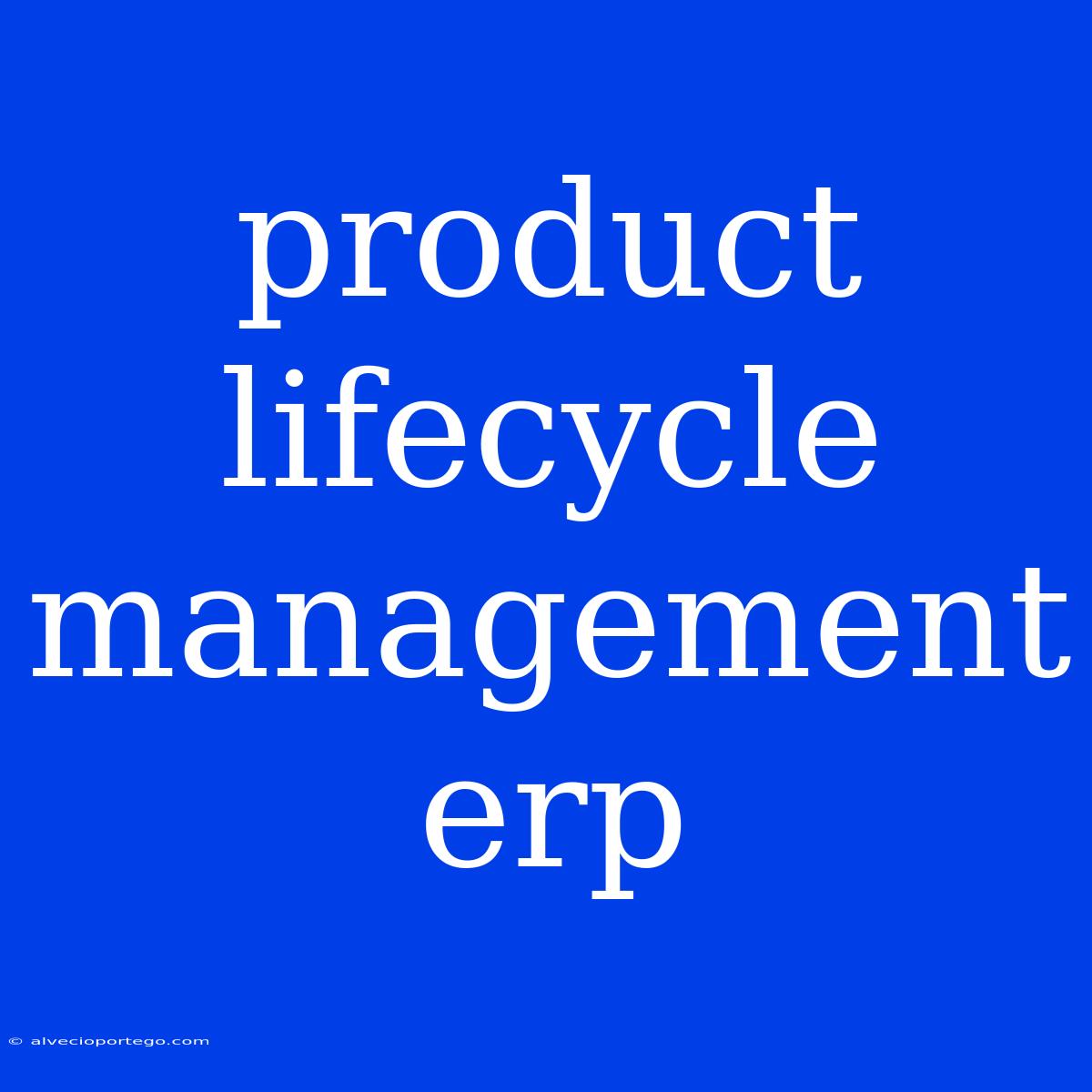Product Lifecycle Management (PLM) and ERP: A Powerful Partnership
Product Lifecycle Management (PLM) and Enterprise Resource Planning (ERP) are both critical systems for businesses to manage their operations effectively. While they often operate independently, the integration of PLM and ERP can unlock significant benefits for companies across various industries. This article explores the relationship between these two systems and how their integration can streamline business processes, enhance collaboration, and drive growth.
Understanding PLM and ERP
PLM is a strategic approach to managing a product's entire lifecycle, from ideation to end-of-life. It encompasses various stages, including:
- Product development: Design, engineering, prototyping, and testing
- Production: Manufacturing, sourcing, and assembly
- Marketing and sales: Promotion, distribution, and customer support
- Service and maintenance: Repair, upgrades, and customer service
ERP systems are designed to manage core business processes, including:
- Finance: Accounting, budgeting, and financial reporting
- Human resources: Payroll, recruitment, and employee management
- Supply chain: Inventory management, procurement, and logistics
- Manufacturing: Production planning, scheduling, and quality control
The Benefits of Integrating PLM and ERP
While PLM and ERP systems can function separately, their integration creates a powerful synergy, enabling companies to:
1. Improve Data Accuracy and Visibility:
Integrating PLM and ERP systems creates a unified data repository, eliminating data silos and inconsistencies. This allows for real-time visibility into product data, including:
- Bill of Materials (BOM): Accurate and up-to-date BOM data is crucial for efficient manufacturing and procurement.
- Product specifications: Integrating product specifications ensures consistency across all stages of the product lifecycle.
- Engineering changes: Changes made to product designs are instantly reflected in the ERP system, minimizing errors and delays.
2. Enhance Collaboration and Communication:
Integrating PLM and ERP systems facilitates seamless communication and collaboration between different departments, including:
- Engineering and manufacturing: Engineers can share product designs and specifications with manufacturing teams in real-time, reducing rework and delays.
- Sales and marketing: Sales teams can access product information and real-time inventory data, enabling them to provide accurate quotes and lead times.
- Customer service: Customer service representatives can access product information and history, allowing them to provide quick and efficient support.
3. Streamline Business Processes:
Integrating PLM and ERP systems automates critical business processes, leading to:
- Reduced lead times: Seamless data flow between systems minimizes delays in product development, production, and delivery.
- Improved efficiency: Automation reduces manual tasks and eliminates redundant processes, freeing up employees to focus on value-added activities.
- Increased productivity: By providing accurate and readily available data, PLM and ERP integration empowers teams to work more efficiently and effectively.
4. Drive Innovation and Growth:
Integrating PLM and ERP systems fosters a culture of innovation by enabling companies to:
- Track product performance: Analyze real-time data on product performance, customer feedback, and market trends to identify opportunities for improvement and innovation.
- Develop new products faster: Streamlined processes and accurate data facilitate faster development cycles, enabling companies to introduce new products to market quickly.
- Respond to market changes: Integrated systems allow companies to quickly adapt to evolving customer needs and market dynamics.
Conclusion
Integrating PLM and ERP systems is essential for businesses seeking to optimize their product lifecycle management, enhance collaboration, and drive growth. By creating a unified data repository, streamlining processes, and empowering teams with real-time information, PLM and ERP integration provides a competitive advantage in today's dynamic business environment.

